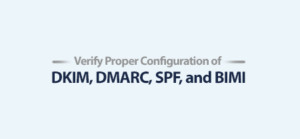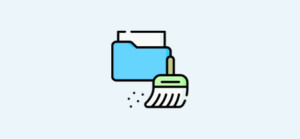You can not please everyone. Some people will opt-out of your email list no matter what. It’s not you. It’s them. This is a struggle for many business owners. According to InsightSquared, it can cost you up to 25 times more to acquire a new customer than it does to retain an existing one.
On the other hand, if you reduce your churn rate by as little as 5% it's possible to increase profits by 25 to 95 percent.
Email marketing drives more conversions than any other marketing channel. It is high-time you realize the importance of email unsubscribe-rates within your business. The truth is, while you can’t always prevent readers from opting out of your emails, you can reduce the likelihood of them doing so with a few proven practices. You can have the fastest-growing online audience, but if people are opting out as often as others are opting in, you’ll have little to show for your efforts.
What’s a Good Unsubscribe Rate?
Before discovering how to reduce email unsubscribe rates for your business, it’s worth knowing what a good unsubscribe rate is:
According to a recent study by SignUpTo, the average email unsubscribe rate is 0.52%.
This fluctuates greatly from industry to industry. Mailchimp, in their research, found the average unsubscribe rate can be as high as 1.13% for telecommunications and as low as 0.10% for daily deals and coupons. So, if you’re below the 2%, as Campaign Monitor recommends, you’re doing something right. If you’re not the following strategies will help you get your rate down even further.
How to Reduce Your Unsubscribe Rate?
Set Expectations
You promise a friend you’ll meet them at a certain place at a certain time but despite your best intentions, for one reason or another, you get caught up and keep your friend waiting. If your friend is understanding, they’ll forgive you but if you do it consistently, over time, it will damage your friendship.
Oh my god...I'm so sorry... you're not gonna believe this … My dog ate my car keys...barfed them up in the toilet...then it caught on fire...the fire department got stuck in traffic...luckily, I had a spare set of keys but then I got stuck in traffic…
People value consistency in others. When we say we’re going to do something only to do something else, we become inconsistent. If we become inconsistent, others begin to doubt our integrity. To build trust with your audience you need to set an expectation for when and how frequently you’re going to email them.
- Paul Jarvis sends an email every Sunday.
- TED asks you your preferred time to get an email from them.
That’s how you set your audience’s expectations from your side.
Single and Double Opt-ins
Use a combination of single and double opt-ins. If you speak to any marketer long enough and there’s one question that’s likely to come up: Do you use single or double opt-ins?
A single opt-in is when a visitor doesn’t need to confirm their subscription. They enter their email addresses and are immediately added to your list. A double option is when a visitor is required to confirm their subscription via their email. Research by Mailchimp has found campaigns with double opt-ins have lower spam complaints and unsubscribe rates. While there’s no definitive answer to which is more effective, both practices have their respective advantages and disadvantages.
A good rule of thumb is this:
- If you’re offering a content upgrade, use a single opt-in.
- If you’re collecting emails elsewhere, such as your homepage, use a double opt-in.
One of the challenges of using double opt-ins is getting readers to confirm their subscriptions. In fact, as many as 20% of people who opt-in on your site won’t confirm their email. With the average person receiving as many as 122 emails per day, you need to cut through the noise if you want to get your emails opened.
There are a few ways to do that like creating urgency in the subject line and body copy or giving the subscribers an opportunity to confirm their emails to be correctly entered.
You should use single opt-ins for content upgrades and double opt-ins for everything else and try to stand out with your confirmation email.
Segment Your List by Interest
You read an article, opt-in for a bonus or join a newsletter and what do you get? Content that’s completely irrelevant to what you originally signed up to. In fact, it’s the third most common reason why people unsubscribe from emails. So, what’s the solution?
Send targeted emails using segments. A good practice is to segment your subscribers immediately after joining your newsletter. For instance, when you join the Smart Passive Income newsletter Pat Flynn asks you which option best describes your online business activity. You’re far less likely to unsubscribe that way.
The bottom line? Use segments in your email marketing software and send targeted emails to reduce readers opting out.
Use Normal Subject Lines
The online marketplace is noisier than ever. With more businesses competing for our attention every day, it’s getting harder to cut through the commotion. It’s no surprise, then, that many brands are resorting to questionable marketing tactics to get noticed and that includes using misleading email subject lines.
NO ONE WANTS TO BE MISLEAD.
So, avoid:
- Using all caps as writing in caps is the equivalent of yelling at your customers. If you wouldn’t shout at your customers in person, why would you do it in your emails?
- Capitalizing words in your subject line not only comes across as obnoxious; it can also trigger spam filters.
- Using an aggressive or provocative copy. If you’ve ever received an email with subject lines like “Do you hate me?” or “Open up! This is important” You've probably done what most people do: unsubscribe. Bullying tactics don’t get you far in life, and they won’t get you far in marketing, either.
- Using “spam triggers”. What do words like “free,” “discount” and “now” have in common? They all have the potential to trigger email spam filters.
- Using fake reply indicators Including “regarding:” or “forward” when you’re not replying or forwarding emails might appear clever but it also misleads your audience. It’s hard enough to build trust online but it’s even harder to regain once it’s lost.
- Using false scarcity. Scarcity, when used honestly, can be an effective psychological trigger but using it to create false urgency in your email marketing is a big no-no. People aren’t stupid; they know when something’s about to disappear forever and when it isn’t. So don’t try and trick your readers.
Writing a normal subject line isn’t about skimping on good copy-writing practices, rather, it’s about being as direct as possible with your audience and letting your brand do the heavy lifting.
An effective subject line is only as good as the business that’s sending it and if you’re building a good reputation online and always nurturing relationships with your customers, writing normal subject lines is what will differentiate you from your competitors.
Remember, write to your audience as you would to a friend or colleague, meaning no sneaky tactics.
Revise Your Copy
Unsubscribe + Click = No More Emails
Some companies, though, are challenging readers’ expectations by playing around with what’s become a standard expectation in email marketing.
- Neil Patel reworded his copy from “Unsubscribe” to “Update my preferences”.
- Helpscout changed the color of the anchor text and position of the opt-out link.
This is not to trick your reader. It’s to give them other options before opting out, such as changing their email frequency. Another effective copy-writing practice is to remind readers how they got on your list, to begin with.
- Michael Hyatt outlines exactly how you got on his list at the footer of every email for this very reason.
Give readers a chance to opt-out, of course, but always give them more options so they’re less inclined to do so.
Send a Follow-Up Email
It’s tempting to believe when a customer unsubscribes, you’ve lost them forever. But that’s not entirely accurate. Many businesses are now experimenting with sending follow-up emails to keep readers engaged beyond email.
- Chris Guillebeau offers departing readers a chance to resubscribe to his list using an offer different to his original lead magnet.
- Sean McCabe goes for a gentler request: asking for a follow on Twitter.
It’s important to mention here not to assume all readers unsubscribe because of you. Sometimes, people’s priorities change. Other times, they’re annoyed by too many emails. Either way, look for opportunities to continue your relationship outside of email.
Feedback
Another type of follow up email that’s popular with influencers is simply asking why a reader opted out. Often, the reason might surprise you. Many email marketing providers offer you an opportunity to survey your departing reader but few business owners implement it properly.
- Alex Turnbull from Groove was able to increase customer exit survey responses by 785%
By switching from a survey to an open-ended question with a split-tested copy. With those increased results, Alex was able to increase customer satisfaction and reduce churn. Asking for feedback can be a painful experience, but getting constructive feedback with customer exit survey questions can not only improve user experience, but it can also iterate your customer onboarding process. By being receptive to criticism and actively implementing suggestions, Alex fostered a culture of continuous improvement within the company.
That’s a win-win. So, were these strategies any good in keeping your unsubscribe rates low? Share with us in the comments section.



![Mail Merge Explained: Definition, Uses, Tutorial [2025]](https://ik.imagekit.io/debounce/wp-content/uploads/2024/06/mail-merge-explained-300x139.png)

